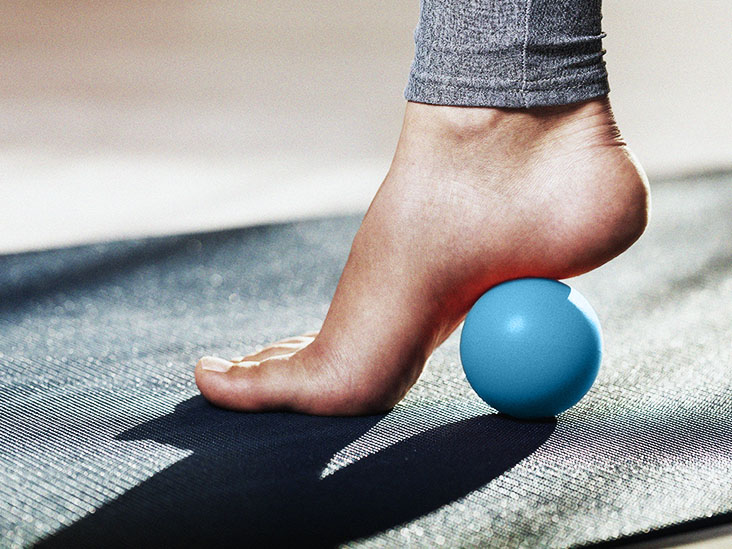
Plantar fasciitis: what is it, symptoms, treatments and causes
Plantar Fasciitis is a heel pain commonly experienced by athletes. Those who are overweight also fall into the category of susceptible patients. It is a fairly common ailment where some changes can be alleviated or disappear entirely.
We want you to have good health, so we will explain this topic to you and, of course, what treatments you can apply to alleviate or cure plantar Fasciitis.
What is plantar Fasciitis?
The plantar aponeurosis – also known – is an inflammation of a thick tissue connected to the foot’s sole. Just before reaching the heel, the tissue becomes inflamed, which can cause stabbing pain.
This thick tissue is vital when taking steps when walking or running. It prevents excessive flexion of the fingers and maintains the arch and balance when walking together with other foot issues. Pain in this area is not, in principle, a serious matter. However, it is necessary to attend to it; otherwise, it can become chronic and persistent, affecting our daily activities.
Symptoms of plantar Fasciitis
The foot can be injured for various reasons, so it is vital to know the symptoms of this discomfort to detect if it is Fasciitis or has another cause. Next, we will indicate the most common symptoms.
- There is a stabbing pain in the sole when getting up in the morning.
- The pain intensifies after a while of rest, and you stand up.
- Pain can also be intensified after prolonged standing, such as excessive sports.
- While walking, the pain decreases.
Plantar fasciitis causes
The exact etiology of the plantar aponeurosis is not known. However, some factors can cause tension in that area, causing small tears that induce heel pain. Here are some possible causes or risk factors
- I am standing for long hours.
- poor posture when walking
- Inadequate footwear that does not cushion and distribute weight
- Overweight
- Women who habitually wear high heels and switch to flat shoes can stress the Achilles heel, making them more susceptible to plantar Fasciitis and other discomforts.
- Physical exercises that put a lot of stress on the foot include aerobic movements. Running too much can also play a role.
Is plantar Fasciitis the same as heel spurs?
These two discomforts are closely related. First of all, when you feel any persistent pain in your foot, you should go to your GP. He will order an X-ray. This exam will show if it is Fasciitis or a spur.
There is a calcification of bone or sharp projection in the Spur, which may require surgery (Although this is the last option when all else fails).
The pain is persistent, and there have even been reports of patients who have felt pain for months, which does not allow them to walk comfortably much less exercise.
Instead, Fasciitis is an occasional pain in the sole or heel that usually subsides after a bit of walking.
Some studies indicate that the Calcaneal Spur begins with Plantar Fasciitis. This means that if you do not treat Fasciitis, you can develop a spur, in which more specialized treatments are required.
Plantar fasciitis treatments
The best medicine for this discomfort is to reduce the tension generated in the fascia. In this sense, it is convenient to know the cause of our pain.
If it is a wrong step, you can solve it using anatomical insoles. The pes valgus is characterized by collapsing towards the inside, and the high arches have a foot taller than the common one. In these two cases, the use of insoles will be necessary.
Templates may need to be customized based on foot type. This will allow you to release tension without the risk of suffering pain again.
It is necessary to alleviate the pain, for which anti-inflammatories are prescribed, such as Naproxen, Ibuprofen combined with Physiotherapy treatments.
One recommendation is to use comfortable shoes of our size to avoid foot injuries. Massage can relieve ailments, including myofascial release, stretching, and strengthening.
Exercises to improve the symptoms of plantar Fasciitis
A podiatrist is a doctor who specializes in treating this type of foot problem. It will offer you the best treatment according to the characteristics of your condition. There are exercises that you can do at home to reduce pain, and they are the following:
- Myofascial release. It would help if you released the tension of the plantar tissue. To do this, you can apply some cold while you exert pressure on the plant. Take a bottle of hard water and place it on the ground. This exercise has an analgesic and anti-inflammatory effect. Do it at the end of the day.
- Stretching. It would help if you tried the foot by influencing the twins and soleus. Sitting, take an elastic band or long scarf, place it on foot, exerting pressure without bending the knees. Make sure the ball of the foot flexes towards the leg. Repeat at least 15 times for four series.
- Strengthening. At this point, you must strengthen the intrinsic muscles to provide the strength required to support the plantar arch. Take a handkerchief, leave it on the ground, sit down, flex your fingers, try to grab it, and move it towards you. You should do this exercise for about 3 minutes.
The specialist (podiatrist, physiotherapist) will be the best person to teach you the most appropriate exercises and the technique to perform them correctly.
